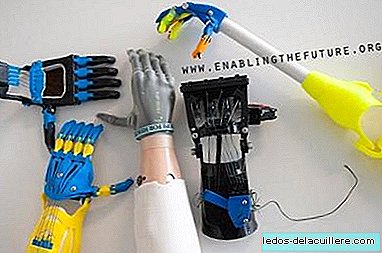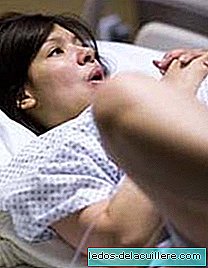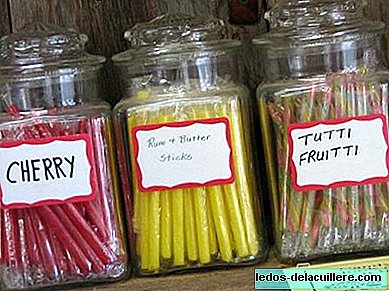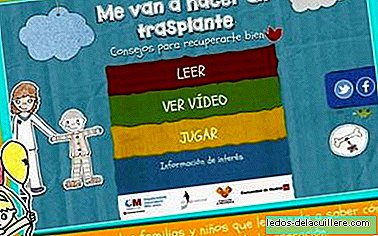
That a child is born with a problem that prevents the complete development of a limb or that suffers an accident that damages it is something that we know will mark its future. Although in many cases, children who have been born with this problem, see it as normal and have become accustomed to living with it, the world around them does not see it the same, which ends up making them the object of ridicule.
We have to recognize that we live in a world that is not punished for those who are different and that in our day to day we will need the use of both hands. A group of engineers, physiotherapists, designers, 3D printing enthusiasts and many more people have joined under an association called E-nabling The Future (something like making the future accessible). This group of volunteers, helped by the new 3D printing technology is dedicated to creating amazing prosthetic hands for children.

E-nabling The Future or as they call it, "movement for the creation of 3D mechanical hands" was created from an idea that emerged from an American prosthesis creator and a South African carpenter. Their passion and the desire to change the world the world around them made it possible for them to eliminate those thousands of kilometers that separated them to help, at that time, a small child who needed a prosthetic hand.
That was the beginning, the seed from which a non-profit organization is born today, formed by a heterogeneous group of professionals, family members, parents and anyone who wants to add their grain of sand to change.
The existing prostheses to date are very expensive and are only made by specialized companies and are designed more for adults than for children. The idea was to be able to create a cheap and simple prosthesis to build in such a way that anyone could do it or to have someone do it. With this in mind they began to make the first designs to be able to print with the new technology of 3D printers. All this makes manufacturing and marketing costs go from several thousand dollars at a fraction of that price. And if that were not enough, this technology allows us to repair them, replace a piece or simply change the color and shape from home and as many times as necessary.

According to its founders, the perfect prosthesis would be to combine different materials in a biological design. The bones can be made of a strong and light material, tendons and ligaments are printed in a strong and flexible material and the skin is made of an elastic and adherent material. By printing all at once, these materials could make a biological hand that behaves just like the human hand.
Some of the materials with which the hands are manufactured, such as the polymers with which the bones are made, are not strong and resistant enough to withstand the trot (due to carelessness and mistreatment) given by young children, so The advantage of being able to print new parts in a cheap and simple way is basic.
The idea is to keep costs low by keeping the project open source. Not only does this make it cheap to build, but anyone with access to these types of printers can do it. All this would have a great impact in those areas of the world with few resources in which the population cannot afford conventional prostheses.
From their website, facebook or twitter help and support anyone who wants to build one or have a problem with one already made.
Another advantage is that the hands can be "tuned", and in E-nabling The Future there are true design experts capable of doing impressive things.

It certainly seems incredible to me that simply with the effort of two people who were separated by an entire ocean, something as beautiful and useful as this could come out.
Via | E-nabling The Future In Babies and More | Cochlear implant: characteristics, The reaction of a 7-week deaf baby upon first hearing












